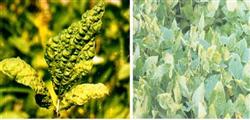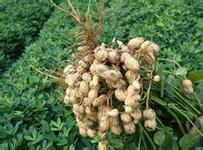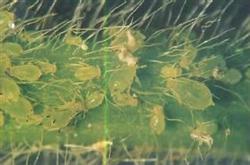How to prevent soybean mosaic disease

Suihua City, Heilongjiang Province is the main soybean producing area, with an area of nearly 300000 hectares planted all the year round. In recent years。 The occurrence of soybean mosaic disease has a trend of increasing year by year, most plots have occurred, the field disease plant rate is generally about 4.8%, serious up to more than 20%, the brown (black) spot grain rate of soybean grain is more than 10%, resulting in the decline of soybean yield and quality. We have adopted comprehensive technical measures such as selected seeds, timely extraction of diseased plants in combination with production trips, control of aphids with high efficiency, low toxicity and low residue insecticides, and chemical prevention, and achieved good control results, with a control effect of more than 90%. First, the cause of the disease. 1. The seed-borne pathogen is mosaic virus, and the virus particles are linear. The primary infection source of soybean mosaic disease is mainly poisonous seeds, and the plants grown from poisonous seeds become the source of re-infection in the field, and soybean mosaic virus is easy to contact and spread. There are many brown (black) spots in soybean seeds infected with virus disease, and the rate of brown (black) spots is about 10%. 2. The main vector of soybean mosaic virus transmitted by aphids is soybean aphid. High temperature, low rainfall, high concentration of soybean body fluid and rich nutrition are beneficial to the reproduction of aphids. The larger the number of aphids and the earlier the occurrence of aphids, the more early diseased plants and the more serious the occurrence of mosaic disease. In recent years, the occurrence of soybean aphids is relatively large, which provides a transmission vector for the occurrence of soybean mosaic virus. From 2000 to 2003, there were nearly 10,000 aphids per 100 soybean plants, and the rate of aphids was more than 90%. The symptoms of soybean mosaic disease show typical mosaic symptoms in leaves, which are usually obvious in tender leaves, but not obvious in old leaves. There are three common mosaic symptoms: first, heavy mosaic type, diseased leaves are yellow and green mottled, wrinkled seriously, leaf veins are brown and curved, mesophyll is bubbly, dark green, the edge of the whole leaf curls backward, the vein of the leaf is necrotic in the later stage, and the plant is dwarfed. The second is the wrinkled flower and leaf type, the diseased leaves are wrinkled with yellow and green flowers and leaves, the leaves are bubbly along the leaf veins, and the downward curling of the leaf edge often makes the leaves wrinkle into a crooked abnormal type, the plant is dwarfed and the pods are less. Third, the light mosaic leaf type, the leaf growth is basically normal, the naked eye observation has a slight yellowish mottle, plucked diseased leaves through the sun to see yellow and green mottle. Most of the resistant varieties or late susceptible plants showed this symptom. 2. The symptom of soybean seedling stage is generally the phenomenon of bright vein on the true leaf, which soon becomes flower and leaf, the Internode of the diseased plant is shortened, and the plant is dwarfed. The dwarfing of plants with seed virus was more serious, but the dwarfing phenomenon of plants infected by aphids in the later stage was not obvious. 3. The symptoms of disease spots on soybean seeds often appear radial or irregular brown or black markings from the navel, and the presence and severity of the markings are related to the susceptible period. The seed markings of the diseased plants with poisonous seeds are obvious, and the seed transmission rate is high. In the later stage, the plants infected by aphids, especially those infected after flowering, the markings on the seeds are often not obvious. However, whether the seeds are poisonous or not is not entirely determined by the presence or absence of markings, and unspeckled seeds are not necessarily free from poison. Third, control measures 1. Select soybean seeds strictly before sowing, carefully select susceptible soybean seeds manually, remove brown (black) spots, and reduce the source of primary infection as much as possible. 2. The occurrence and prevalence of soybean mosaic disease is closely related to the number of aphids and the appearance of high bees sooner or later, so it is the key to control soybean mosaic disease by investigating and predicting the insect situation, spraying the aphids in time and killing the aphids in the point and slice stage. Aphid control agents are: per hectare with 10% imidacloprid (Dachong, Yuanjing, lice aphid, lice aphid, etc.) wettable powder 300 kg 450 g, 3% Mobilang EC 450 ml, spray 450 kg of water; or 2.5% green kungfu EC 600 ml, 20% Huifeng fast EC 300 ml 450 ml, spray 450 kg water evenly. 3. The diseased plant should be pulled out in time in combination with shoveling in soybean seedling stage. At the same time, spray to prevent and control virus disease before or at the early stage of the disease, using 1. 7-2.25 kg water agent per hectare and spraying 450 kg water, so as to spray evenly, without leakage, and apply 2 times continuously, each time at an interval of 7: 10 days; or 900 grams of 20% poison A wettable powder per hectare, spray 450 kg of water evenly, spray once every 7 days, 3 times in a row. In addition, in July to August, it can also be combined with the control of aphids to control virus diseases.
- Prev

What are the requirements of soil conditions for high yield of peanut
(1) the whole soil layer is deep. The whole soil layer of high-yield fields should be more than 50 centimeters. 99% of peanut roots are distributed within 50 cm, and the main roots are more than 1 meter deep. Therefore, the depth of soil is very important for the growth and development of peanut roots. (2) the tillage layer is active. Thickness in the range of 30 cm is Xuan live fertile tillage layer, also.
- Next

Diseases and control of pollution-free soybean
Soybean aphid is one of the main pests of soybean. Adults and nymphs are used to suck juice on the top leaves, tender leaves and stems of soybean plants. When it is covered with stems and leaves, it can also damage young pods, resulting in plant dwarfing, reducing the number of fruiting branches and pods, reducing 1000-grain weight, and killing the whole plant in serious seedling stage.
Related
- The first cup of black tea in spring, the flavor and history of tea gardens in Kenya, Africa
- The computer can not only choose potatoes, but also grow tea rice. AI will grow winter oolong tea champion.
- It is not only the inflated tea bitten by insects, but also engraved with the four seasons tea in Beipu.
- The Oriental Beauty Tea Festival in Zhuxian County takes the stage at the weekend to experience the plus-size feast of oil tea.
- & quot; Oriental Beauty Tea & Exploration of Emei in Hsinchu, the hometown of quot;
- The new variety of strawberry "Tainong 1" dessert is the first choice with mellow aroma. Crimson gorgeous
- History of Tea in Taiwan: from Wild Inner Mountain to Export Tea Garden
- Two types of Taiwan Oriental Beauty Black Tea won the British three-Star Award for Childhood Tea Xiang Zhang Jiaqi changed from pilot to champion tea maker.
- Banana species and varieties: the planting history of Taiwan Xianren banana and dwarf banana is long, is banana disease resistant?
- Coffee planting Technology: Qianjie Coffee from Seedling to harvesting

